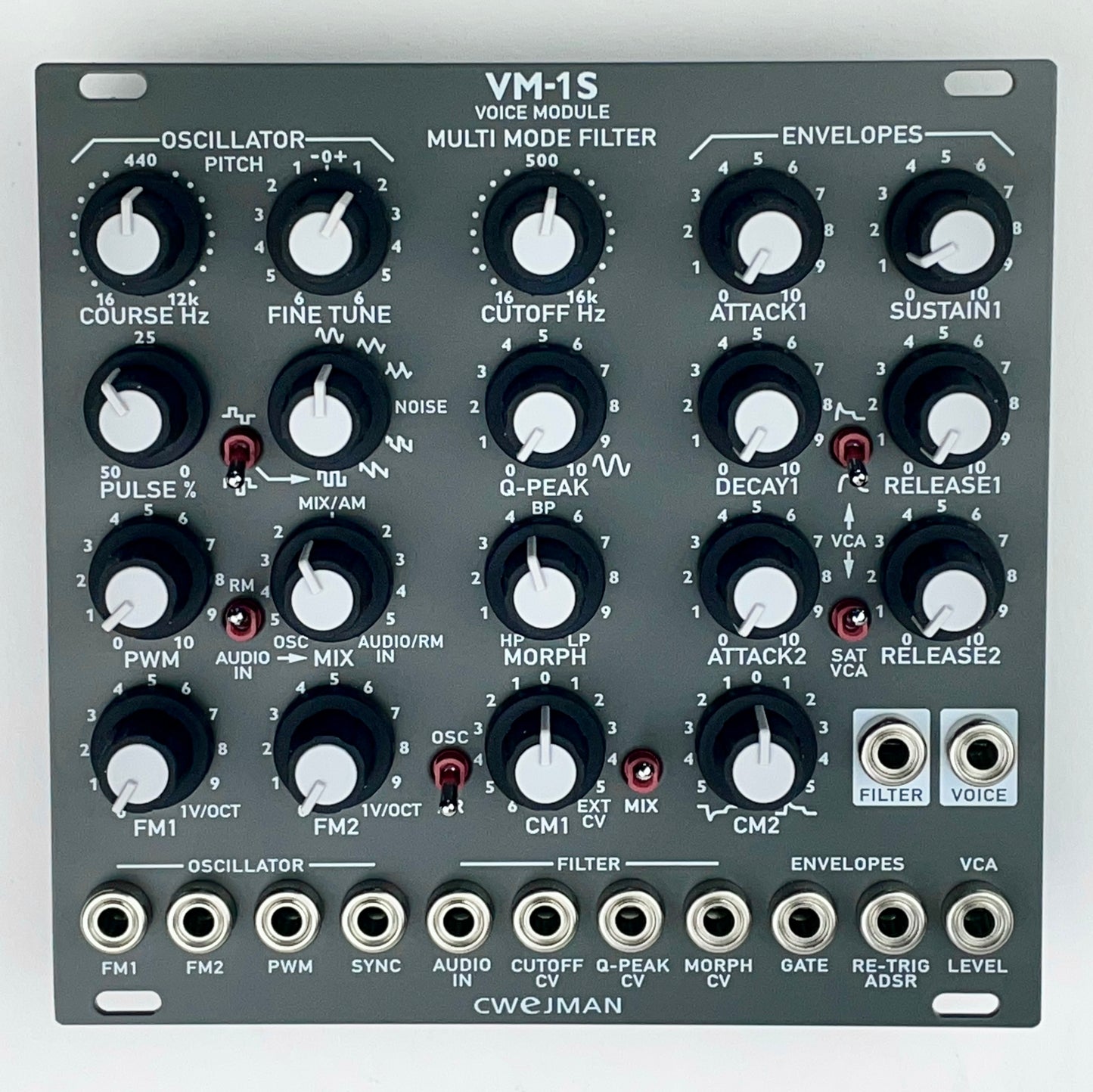Cwejman VM-1S Voice module, grey
Cwejman VM-1S Voice module, grey
Couldn't load pickup availability
Listed price includes tariffs + duties + fees (approximately 14%) we are now required to pay on imported Cwejman modules.
The Cwejman VM-1S is a full-blown synthesizer voice in proven Cwejman quality. More precisely, the module features an oscillator, a multimode filter, ADSR and AR envelopes as well as a VCA. Compared to its predecessor, the Mk2 offers more (complex) VCO waveforms and noise. Furthermore, a ring modulator and switchable VCA saturation were implemented. The VM-1 Mk2 can produce crystal-clear to wonderfully creaky sounds. Thanks to all kinds of audio and CV connectors, the module can be easily expanded by third-party circuits.
The VM-1 is considered the best compact synthesizer voice for Eurorack systems. With the Mk2 version, a worthy successor was introduced. It exceeds the capabilities of the predecessor in various ways.
The oscillator is based on circuits known from the large S1 synthesizer and the VCO-2RM module. In total, eight waveforms are available. Besides standards, the VM-1 Mk2 offers triangle, saw and pulse waves that can be deformed via a potentiometer. – Cwejman fans may know this concept from the VCO-6 already. A switch for choosing pulse waveforms with mostly odd or even harmonics was implemented as well. Alternatively, noise can be used as the module’s audio source. The pitch is alterable via coarse and fine tune knobs. The oscillator’s frequency range goes from 10 Hz to 22 kHz. PWM and two 1 / v per octave FM inputs with attenuators can be used to control the VCO externally. Furthermore, there is a sync connector.
Signals generated by the VCO or noise source can be mixed or ring modulated with external audio material. Results are fed to the multimode filter. Using a potentiometer, you can morph between low-pass, band-pass and high-pass characteristics. The cutoff frequency is manually controllable plus there are two CV inputs with bipolar attenuators. Alternatively to external control voltages, the modulation channels can be fed by internal sources. In detail, the first CV input may be wired to the AR envelope or the VCO. The second modulation channel is normalized to the ADSR envelope. The frequency range of the multimode filters goes from 16 Hz to 16 kHz. High settings of the resonance potentiometer make the circuit self-oscillate.
The VCA can be controlled via either the AR or ADSR envelope. A CV input allows you to use external modulation signals as well. Via a switch, it is possible to activate a saturation stage. In case you don’t want to use the VCA, there is a filter output.
AR and ADSR envelope are activated via Gate and Re-Trig inputs. Attack, decay and release potentiometers can be set to values ranging from 0.5 milliseconds to 20 seconds.
Share













